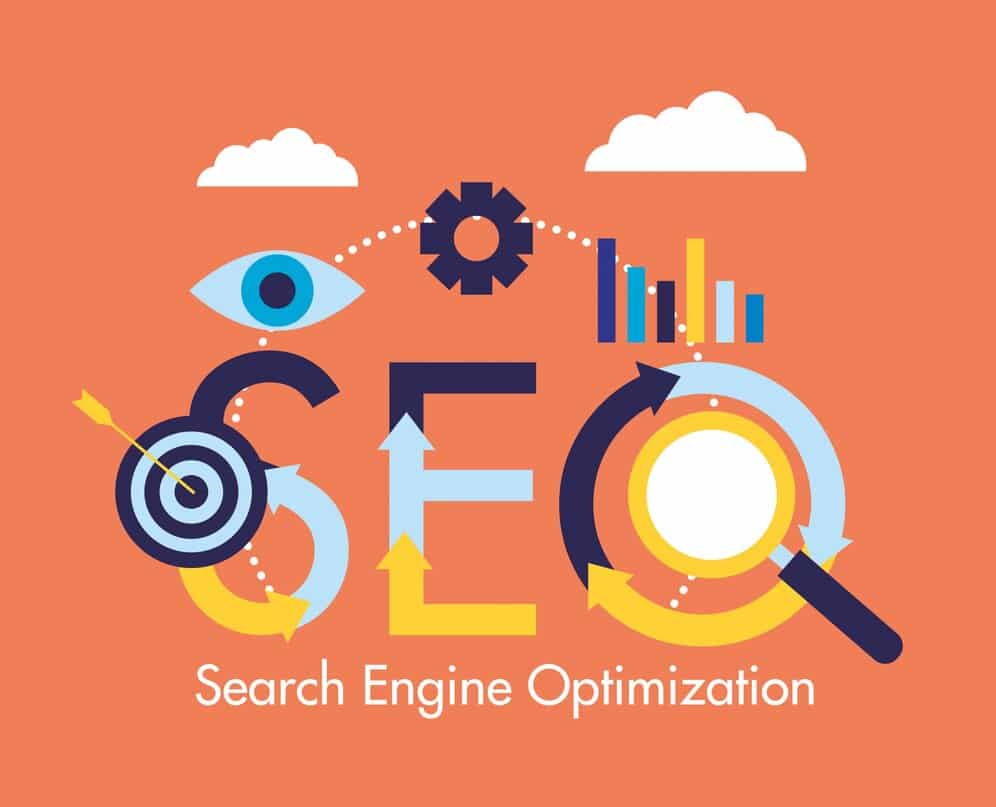Meta tags are small pieces of code that help search engines understand what your webpage is about. They play a big role in how your site appears in search results and can influence whether users click on your link. Using them effectively can improve your site’s visibility and engagement.
Key Takeaways
- Meta tags give important info about your webpage to search engines.
- They can help increase the number of clicks your site gets from search results.
- Using keywords in your meta tags makes your site more relevant.
- Good meta tags can improve how your site looks on social media.
- Regularly updating your meta tags helps keep your site fresh and relevant.
Understanding HTML Meta Tags

Definition and Purpose
Meta tags are small pieces of code in the HTML of a webpage. They help search engines, and visitors understand what the page is about. These tags provide important information that can influence your site’s search results.
Types of Meta Tags
There are several types of meta tags, including:
- Title Tags: The title of your page, which should be unique for each page.
- Meta Descriptions: A summary of the page’s content.
- Viewport Tags: Control how your page looks on mobile devices.
- Robots Tags: Indicate whether search engines should index the page or follow its links.
- Open Graph Tags: Help control how your content appears when shared on social media.
Importance in SEO
Meta tags play a crucial role in SEO because they can:
- Boost Click-Through Rates: A well-written meta description can attract more visitors.
- Guide Search Engines: They help search engines understand how to index your pages.
- Enhance User Experience: Proper tags ensure your content displays correctly on different devices.
Using meta tags effectively can improve your website’s visibility and user engagement.
How to Implement Meta Tags
Adding Meta Tags to Your Website
To add meta tags to your website, follow these simple steps:
- Open the HTML file of your webpage.
- Locate the
<head>section of the document. - Insert your meta tags between the
<head>and</head>tags.
Example:<meta name="description" content="This is a brief description of the page."> - Save the changes and upload the file to your server.
Common Mistakes to Avoid
When implementing meta tags, be careful to avoid these common errors:
- Skipping the title tag: Always include a unique title for each page.
- Overstuffing keywords: Use keywords naturally; don’t force them into your tags.
- Ignoring mobile optimization: Ensure your tags work well on mobile devices.
Best Practices for Implementation
To make the most of your meta tags, consider these best practices:
- Keep title tags under 60 characters for better visibility in search results.
- Write meta descriptions that are between 150-160 characters long.
- Use relevant keywords but focus on clarity and engagement.
- Regularly review and update your meta tags to keep them relevant.
The Role of Meta Tags in Search Engine Results
Impact on Click-Through Rates
Meta tags play a crucial role in how users interact with search results. A well-crafted title and description can significantly increase the chances of users clicking on your link. Here are some key points to consider:
- The title tag appears as the main link in search results.
- The meta description provides a summary of the page’s content.
- Including relevant keywords can make your link more appealing to users.
Influence on Search Engine Crawling
Meta tags help search engines understand what your webpage is about. This understanding can affect how your page is indexed and ranked. Important aspects include:
- Title tags inform search engines about the main topic of the page.
- Robots meta tags can guide search engines on whether to index a page or follow its links.
- Canonical tags help prevent duplicate content issues by indicating the preferred version of a page.
Effect on User Experience
Meta tags also enhance the overall user experience by providing clear information. This can lead to better engagement and lower bounce rates. Key benefits include:
- Clear titles and descriptions help users find relevant content quickly.
- Well-structured data can improve how your page appears in search results.
- Open Graph tags can enhance sharing on social media, making your content more visible.
Optimizing Meta Tags for Better SEO
Keyword Optimization
It’s important to use the right keywords in your meta tags to make your website more visible. Here are some tips:
- Choose relevant keywords that match what users are searching for.
- Use keywords naturally in your title and description.
- Avoid keyword stuffing, as it can hurt your SEO.
Writing Effective Meta Descriptions
A good meta description can encourage users to click on your link. Here’s how to write one:
- Keep it under 160 characters.
- Make it engaging and informative.
- Include a call to action, like “Learn more” or “Get started.”
Using Open Graph Tags for Social Media
Open Graph tags help your content look appealing when shared on social media. Here’s what to do:
- Use
og:titlefor the title of your content. - Use
og:descriptionfor a summary. - Use
og:imageto add an eye-catching image.
Optimizing your meta tags can significantly improve your website’s visibility and click-through rates. Following these tips can enhance your SEO efforts and attract more visitors.
Advanced Meta Tag Strategies

Using Canonical Tags
Canonical tags help prevent duplicate content issues by telling search engines which version of a page is the main one. This is important because duplicate content can confuse search engines and hurt rankings. Here are some key points about canonical tags:
- Specify the main URL to avoid confusion.
- Use them on pages with similar content.
- Always check for correct implementation to ensure effectiveness.
Implementing Hreflang Tags
Hreflang tags indicate the language and regional targeting of a webpage. This is especially useful for websites that have content in multiple languages. Here’s how to use them:
- Add the hreflang tag in the HTML header.
- Specify the language and region, like this:
<link rel="alternate" href="URL" hreflang="en-us" />. - Ensure that all versions of the page link to each other.
Managing Robots Meta Tags
Robots meta tags control how search engines interact with your pages. They can help you manage indexing and crawling. Here are some common uses:
- Use
noindexto prevent a page from appearing in search results. - Use
nofollowto stop search engines from following links on a page. - Combine both for pages that should not be indexed or followed.
Using these advanced strategies, you can enhance your website’s SEO and ensure that search engines understand your content better.
Common Misconceptions About Meta Tags
Meta Tags vs. Link Relation Attributes
Many people confuse meta tags with link relation attributes. While both are important for SEO, they serve different purposes. Here are some common link relation attributes that are often mistaken for meta tags:
- Canonical URL
- Hreflang attribute
- Pagination attributes
- Mobile attribute
The Myth of Meta Keywords
In the past, meta keywords were thought to be crucial for SEO. However, search engines like Google no longer consider them for ranking. Instead, focus on quality content and relevant keywords within your text.
Understanding Meta Tag Limitations
Meta tags are helpful, but they have their limits. They cannot guarantee high rankings or clicks. Here are some key points to remember:
- Meta tags do not directly influence search engine rankings.
- They are not visible to users on the page.
- Overusing meta tags can lead to confusion and may harm your SEO efforts.
Monitoring and Updating Meta Tags

Tools for Meta Tag Analysis
To keep your website optimized, checking your meta tags regularly is essential. Here are some tools you can use:
- Google Search Console: Helps you see how your site appears in search results.
- SEMrush: Offers insights into your meta tags and their effectiveness.
- Ahrefs: Provides a detailed analysis of your website’s SEO performance.
Regular Audits and Updates
Regularly reviewing your meta tags can lead to better search engine visibility. Here’s how to do it:
- Schedule audits: Set a specific monthly time to check your meta tags.
- Update outdated tags: If your content changes, ensure your meta tags reflect that.
- Test different descriptions: Experiment with meta descriptions to see which ones get more clicks.
Adapting to SEO Changes
SEO is always changing, so your meta tags should too. Here are some tips:
- Stay updated on SEO trends to know what works best.
- Adjust your keywords based on what users are searching for.
- Use analytics to see which tags are performing well and which need improvement.
Frequently Asked Questions
What are HTML meta tags?
HTML meta tags are small pieces of information that help search engines and visitors understand what your web page is about. They include things like the title of the page and a brief description of its content.
Why are meta tags important for SEO?
Meta tags are important because they can help your website appear more prominently in search results. A good title and description can also encourage more people to click on your link.
How do I add meta tags to my website?
You can add meta tags by editing the HTML code of your web pages. Usually, you place them in the head section of the HTML document.
What mistakes should I avoid with meta tags?
Common mistakes include using the same title for multiple pages or writing long, confusing descriptions. Each page should have unique and clear meta tags.
How can I optimize my meta tags?
You can optimize your meta tags by including relevant keywords, writing clear descriptions, and ensuring they match your page’s content.
What are Open Graph tags?
Open Graph tags are special meta tags that help control how your content appears on social media when shared. They can make your links more appealing.







Leave a Reply